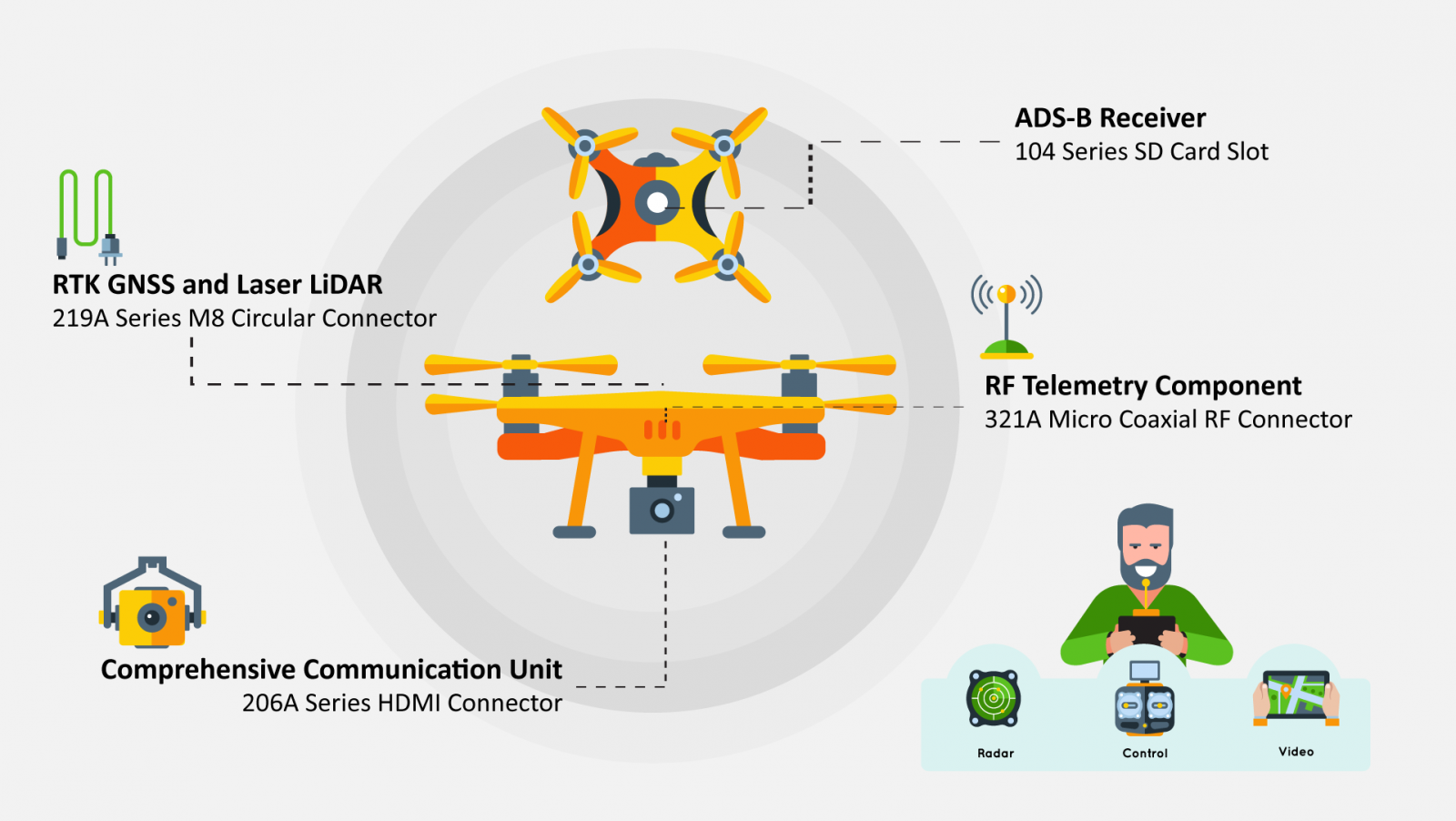.jpg)
Introduction:
The drone industry has consistently been at the forefront of innovation. The integration of autonomous flight systems in multirotor drones marks a significant advancement in this field. This article explores the combination of the achievements of advanced multirotor drones with the latest in autonomous flight systems.
Background:
Six years ago, the advanced multirotor drone was introduced, setting benchmarks with its carbon fiber construction, endurance, and versatility. Today, there's a heightened demand for drones equipped with robust and versatile connector solutions. The focus is on compact designs that are adaptable and can withstand environmental challenges.
The Fusion of Two Technological Marvels:
Advanced Multirotor Drone:
- Legacy: From rigorous tethered endurance tests to humanitarian partnerships, the advanced multirotor drone has been a preferred choice for pilots globally.
- Evolution: While the exterior remains largely unchanged, the internal components have undergone a significant overhaul, emphasizing reliability, safety, and performance.
Autonomous Flight Systems:
- ADS-B Receiver: Captures real-time flight metrics, enhancing aerial traffic insights.
- Comprehensive Communication Unit: Designed for remote control and telemetry, it ensures a seamless connection to camera modules.
- RF Telemetry Component: Establishes robust wireless communication, enhancing real-time telemetry data transmission.
- RTK GNSS and Laser LiDAR: Offers precise location tracking and detailed 3D scanning, bolstering a drone's autonomous flight and environmental sensing capabilities.

Connector solution for autopilot-on-module drone diagram
Synergy
The integration of the advanced multirotor drone with autonomous flight systems has resulted in a drone that is not only reliable and safe but also highly efficient. The following connector products played a pivotal role in this integration:
- 206A Series HDMI Connector: Ensures a seamless connection to camera modules, supporting image-driven computational tasks.
- 104 Series SD Card Slot: Used in the ADS-B receiver to capture real-time flight metrics.
- 321A Micro Coaxial RF Connector: Establishes robust wireless communication, enhancing real-time telemetry data transmission.
- 219A/216A Series M8/12 Circular Connector: Used for RTK GNSS and Laser LiDAR, providing fast data and signal transmissions of up to 10 Gbps, tailored for space-constrained applications.
These specialized connector solutions ensure the drone's high performance and versatility, meeting the industry's demands for compact design, adaptability, and resilience against environmental challenges.
Conclusion:
The successful integration of the advanced multirotor drone with the latest in autonomous flight systems showcases the potential of combining proven technology with cutting-edge innovations. This partnership has not only set a new standard in the drone industry but also signifies a new era of pioneering advancements in aerial technology.
